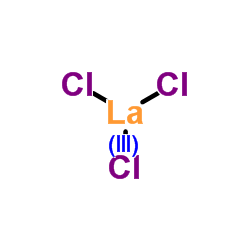| 结构式 | 名称/CAS号 | 全部文献 |
|---|---|---|
 |
无水氯化镧
CAS:10099-58-8 |
|
 |
氯化镧,七水
CAS:10025-84-0 |
| 结构式 | 名称/CAS号 | 全部文献 |
|---|---|---|
 |
无水氯化镧
CAS:10099-58-8 |
|
 |
氯化镧,七水
CAS:10025-84-0 |